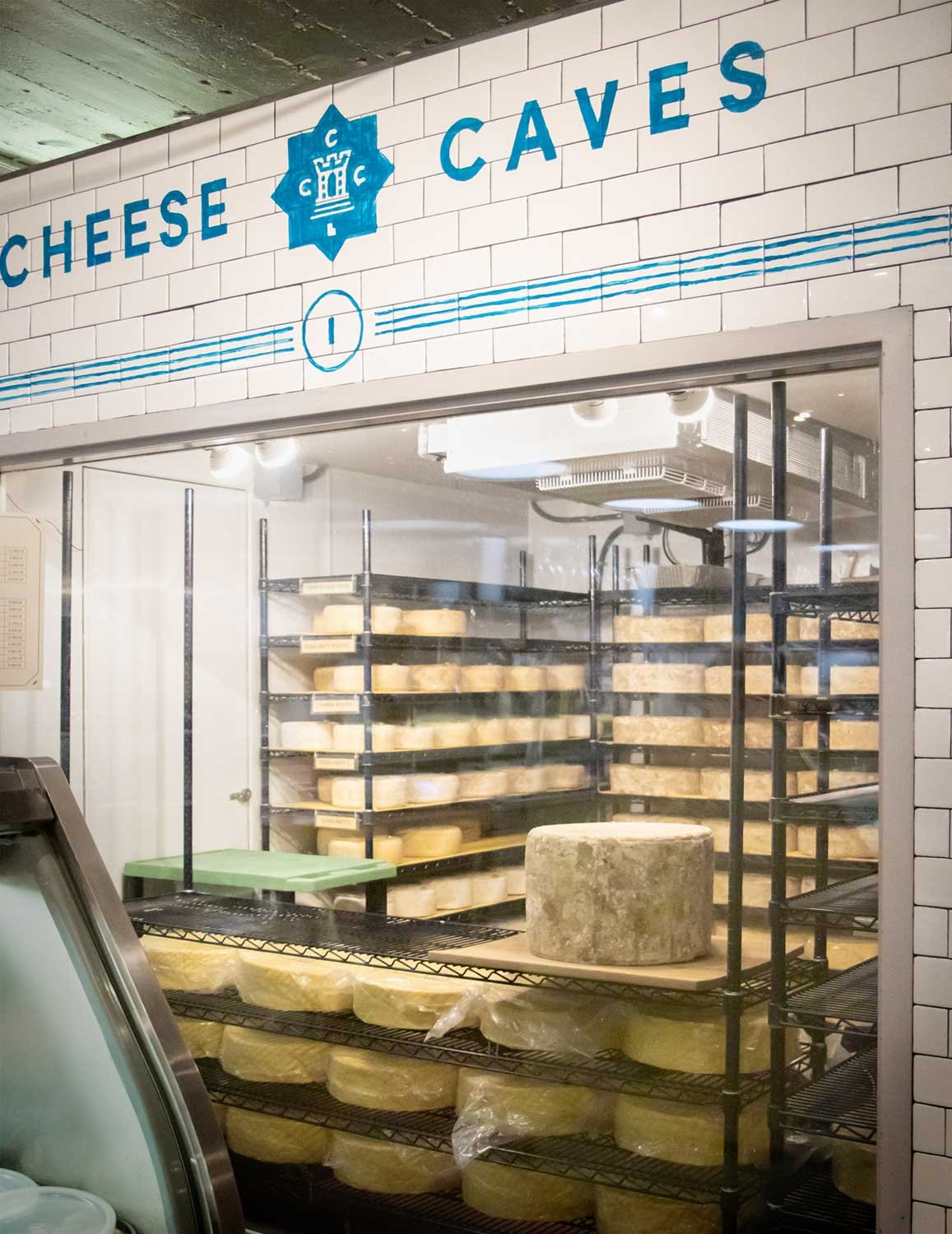How Cheeses are Revived, Transformed & Created in the Caves at Caputo's
Mix together an “evangelistic” enthusiasm and growing knowledge of cheese, a trip to Italy where a taste of Taleggio cheese prompted deep thoughts, and a visit to New York City’s mecca, Murray’s Cheese, and you have the ingredients for Caputo’s cheese caves, according to Matt Caputo, CEO of Caputo’s Market & Deli, located in Salt Lake City.
The Caves
With two small spaces, one measuring approximately seven feet by seven feet and the other slightly bigger, Caputo’s cheese caves age three categories of cheese by either reviving, transforming, or creating. The first cave opened in 2009 and the second one in 2015. “We initially had a lot of heart but didn’t know what we were doing,” Caputo says. He notes that his father and founder of Caputo’s luckily “played the long game” so while there were failures, they were able to spend time educating themselves and the successes followed.
The size of the caves, while presenting some challenges, also work in their favor, according to Antonia Horne, Caputo’s affineuse (a woman who ages cheeses). “When we do a build-in we have to be very conscious of utilizing all the available space.” She notes that means compressing as much cheese as possible into the space without having anything touch. Two caves afford them the opportunity to have the natural rind cheeses in one space and the smear/washed rinds and anaerobic (bag-aged) cheeses in the other, says Horne. “I’ve noticed the smaller space works to accelerate the development of the unique biome that characterizes the cheeses.”
Horne theorizes that, at least initially, a smaller cave speeds up the endemic collection of different mold types, bacteria, and yeast that combine to make the unique terroir of an aging room. “The caves are a close space to work in but the cheeses like it – seems like they share a mutually beneficial relationship.” In the revived category of European cheeses, Caputo mentions the Revived Taleggio D.O.P., a pasteurized cow’s milk, as a prime example. The Taleggio spends three weeks in what the catalog describes as “rehabilitative” care in the caves. There are microscopic crystals on the rind, which Caputo says makes the cheese “glisten.”
The Copper Caputo, another pasteurized cow’s milk, gets Caputo’s nod as an example in the transformed category. In collaboration with The Copper Onion restaurant in Salt Lake City, the cheese is “enrobed” in a reduction of Montmorency cherries, Luxardo liqueur, and brandy. Caputo calls the cheese “surprisingly savory.”
Creating Cheese in the Caves
The cheeses that Caputo’s creates through aging signal a genuine partnership between the store, farmers, and customers. Caputo credits Pat Ford, co-founder of Utah’s Beehive Cheese, with “kicking off the creative segment of the catalog.” Caputo says the cheddar was initially wrapped in the traditional English manner, in fat-soaked bandages. “The bandaging process for the Cheddars now begins with butter, then switches to duck fat.” Caputo says those tweaks “drove the flavor in a different direction,” and notes in was Ford who showed the team how to properly wrap the bandages.
The created category is where the store’s commitment to farmers is apparent. Mesa Tome, a seasonal pasteurized goat’s milk in the create category, is one of several cheeses that is part of Caputo’s Preservation Program, which ‘highlights select products made with traditional craft to support biodiversity and stewardship.” The cheese is made by Mesa Farm in Southern Utah and aged entirely in the cave. “Farming is spiritual to Randy (Mesa Farm’s owner); he’s a seasonal producer and we buy 100% of what he makes and it sells out very quickly,” says Caputo. “While humble in appearance the Mesa Tome is of the most exciting cheeses we have and is such an important part of our mission to support agriculture & farmers,” Horne says.
A New Cheese
This year Caputo’s will be debuting its most personal cheese cave cheese, Tony’s Flowers. The store’s founder, Tony Caputo, passed away in March 2021 and this cheese is an homage to him and a chance to work with Idaho’s Lark’s Meadow Farms. “This is our most important project for a number of reasons,” says Caputo. It is a nod to his father’s love of Alpine cheeses and gives them the chance to work with the cheesemaker, who Caputo terms “a beautiful person who is a dying breed of farmer who does things like they did a 100 years ago.”
Dried flowers and herbs will be applied to the exterior of the cheese. “The taste is herby, savory and almost meaty,” Caputo says. Horne says that Tony’s Flowers represented a little bit of a leap of faith as the methods used in creating the cheese were not methods she’s used extensively in the past. “I think of all the cheeses we’ve created here this is the one I’m proudest of.”
Both Caputo and Horne say that the cheese caves offer another way of connecting with their customers and providing them education. “We’ve brought our customers along on this ride,” Caputo says. He notes that the store is fortunate as their customers want to support good agriculture and are interested in hearing about a cheese’s history. Horne says Caputo’s is teaching people to think of cheese as “a living, breathing organism.” She says the cheese program has enabled the store to “demystify cheese, have people step back from fear or intimidation, and help them have more open-minded palates.”



